Beware the rise of overpriced “Inbound Don” at tourist spots in Japan
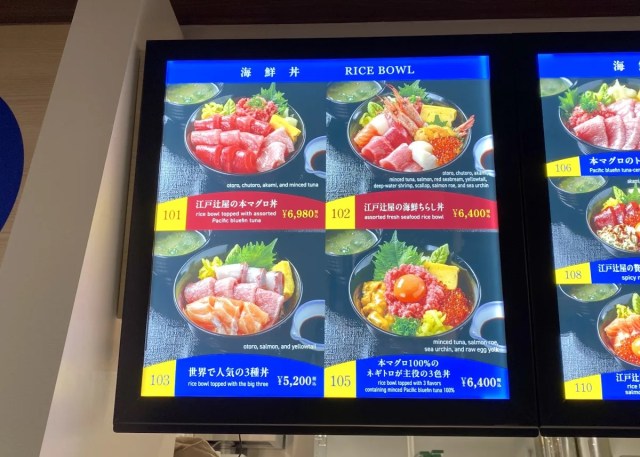
Return of inbound tourists means prices are skyrocketing, with some places charging US$120 for a bowl of seafood.
In Japan, the suffix “don” (from “donburi” or “large bowl”) is used for one-bowl meals containing rice and a topping, like gyudon (beef rice bowl), katsudon (fried cutlet rice bowl), and oyakodon (chicken and egg rice bowl).
In recent months, however, a new type of “don” has been gaining traction in Japan — the Inbound Don. Taking its name from inbound tourists, this term refers to the incredibly overpriced meals that have been appearing at tourist spots, including popular ski resorts such as Niseko.
▼ In a country where you can get huuuuge bowls of katsudon like the one pictured below for 1,100 yen (US$7.31) , anything more than that is considered expensive.
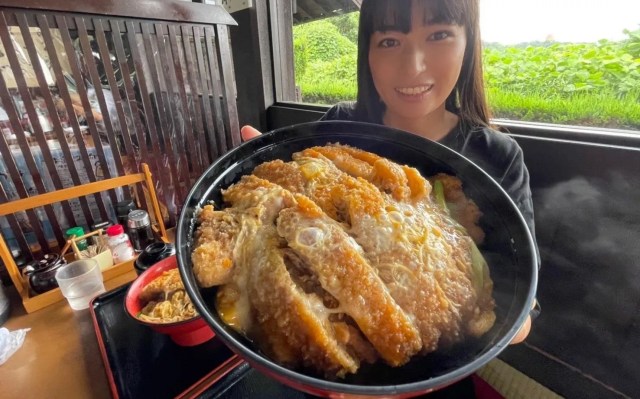
Inbound-don, or “インバウン丼” (“inboundon”) as it’s known in Japanese, is a catchall term for any type of meal that’s typically around twice as expensive as locals would expect to pay for them. The logic behind the jacked-up prices is that overseas travellers are prepared to pay more as it matches the price of Japanese food in their home countries, and it’s made even more affordable to them due to the weak yen.
This doesn’t bode well for locals who live and work in Japan, however, as the comparatively low incomes and weak yen make these exorbitantly priced foods unaffordable. One place where this has become a problem is at the newly opened
Toyosu Senkyaku Banrai in Tokyo’s Toyosu neighbourhood, where overseas tourists who were recently interviewed by a local television station described the meals there as “delicious” and “reasonable” in terms of price, while Japanese locals simply had one word for them: “unaffordable“.
▼ Toyosu Senkyaku Banrai opened next to the Toyosu Fish Market on 1 February.
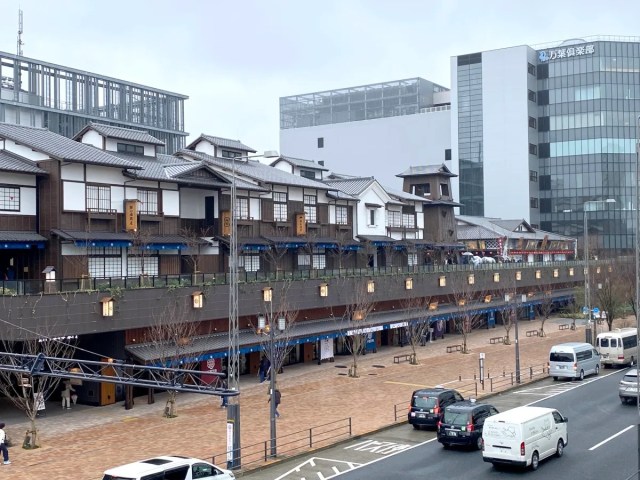
This Edo-themed onsen, restaurant and hotel complex is aimed at overseas visitors, but a lot of local residents have been making the trip to Toyosu to check it out. While high prices are somewhat expected at tourist spots, the prices here are staggering, with one bowl of seafood dubbed “Emperor” selling for 18,000 yen ($119.67).
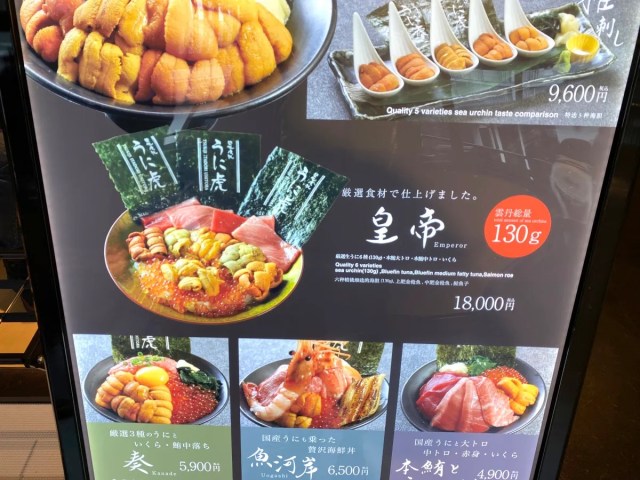
Our reporter P.K. Sanjun visited on a weekday to inspect the eateries firsthand, and during his time there, he said roughly 70 percent of the visitors where Japanese, with only around 30 percent being inbound tourists from overseas.
▼ Sorry, locals — you’ll have to pay through the nose or go hungry here.
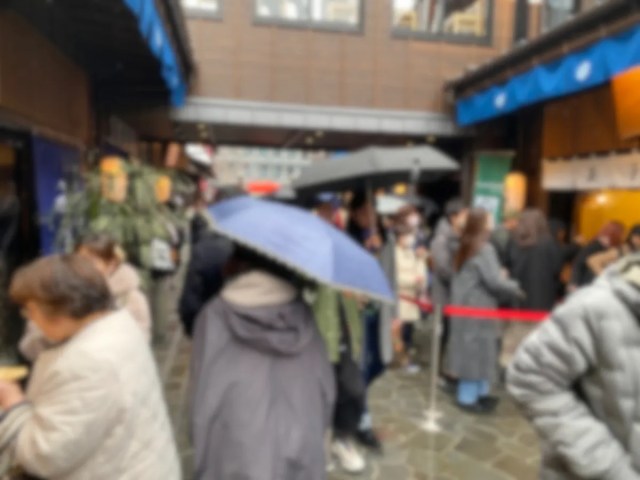
As he walked around the restaurant area, P.K. began to feel bad for fellow locals on a similar wage to him, because the meals on the signboards were way more expensive than usual.
▼ Inbound Don here, there and everywhere.
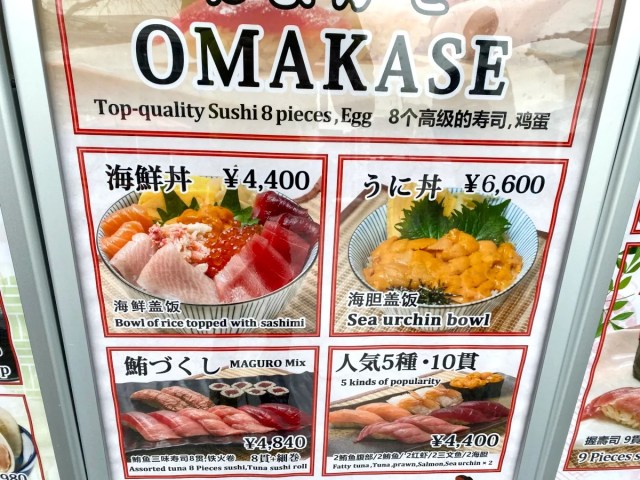
Nobody would expect to pay 4,400 yen for a bowl of seafood outside of an elite sushi restaurant in a posh neighbourhood, and even then it’d have to taste exceptional to be worth that price. Yet, as P.K. walked around he saw this was the standard price for meals here, and even the cheapest option at one of the all-you-can-eat restaurants was 6,578 yen, which a local would balk at.
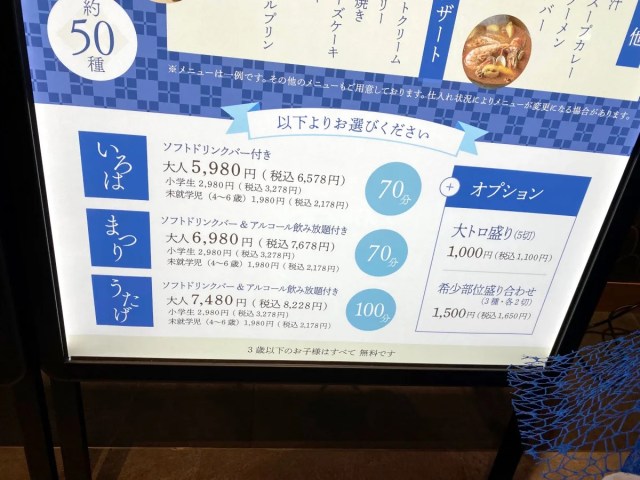
Even the food court, with its laid-back, casual eatery feel, was selling donburi rice bowls for upwards of 5,200 yen, with the most expensive being 6,980 yen.
▼ Ordinarily you could pay 6,980 yen for a full meal at a good sushi restaurant in Japan and still have change.

While these overpriced meals are obviously aimed at inbound tourists, this new complex is yet to become well known with overseas visitors, so as P.K. walked around, he could hear many Japanese customers commenting on the presence of the “Inbound don”.
In the end, P.K. settled on one of the cheapest meals he could find, which was still quite expensive — a 2,000-yen seafood rice bowl.
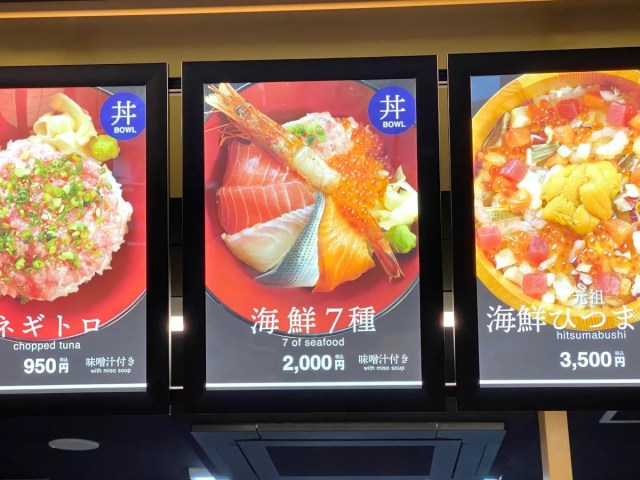
This spot was busier than most, with most of the customers being like-minded visitors searching for something that wasn’t totally out of their price range.
▼ The question was: Would it be worth the 2,000 yen?
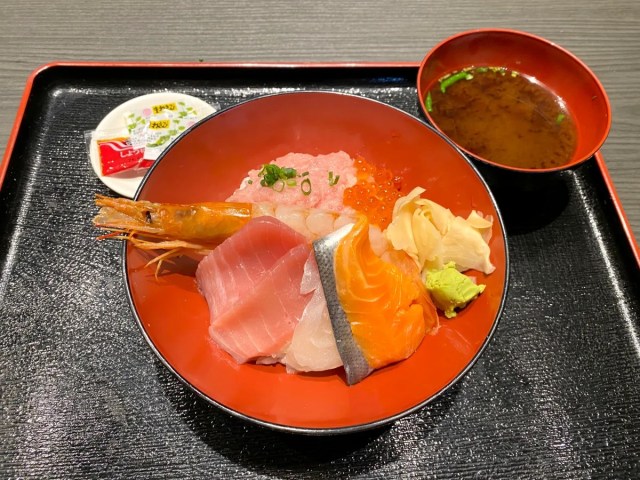
Well, this was definitely quality seafood, and P.K. couldn’t deny it was fresh and delicious. As he savoured the thin slices in his bowl, he realised that though the complex was charging high prices for their meals, it wasn’t totally unjustified, because instead of offering cheap cuts and seafood varieties, they were focussing on more high-quality options in the upper price range.
While locals might reserve these types of meals for special occasions, overseas tourists are willing to pay top dollar, or top yen, for quality seafood at a tourist site like this, but it comes at a cost to locals, who feel pushed away by the high prices. Inbound Don is therefore becoming a problem that needs to be addressed, to ensure that places and restaurants remain affordable for locals. One possible solution put forward by pundits is to introduce double pricing at tourist sites, like the system that exists in places like Thailand, where residents are charged one price to enter temples or ride tuk tuks and tourists are charged higher prices.
Whatever happens, P.K. reckons it’s an issue that ought to be ironed out soon, because with inbound tourist numbers now returning to pre-pandemic levels, the desire to profit on the tourist dollar in the midst of rising living costs in Japan is stronger than ever, and it affects everyone in the country, visiting or otherwise.
So if you do visit Senkyaku Banrai, be prepared to pay for high quality seafood. If you’re looking for a more affordable option, though, you can always pop over to the nearby Toyosu Fish Market, where you can pick up a meal at one of the eateries enjoyed by staff for a fraction of the price.
Site information
Toyosu Senkyaku Banrai / 豊洲千客万来
Address: Tokyo-to, Koto-ku, Toyosu 6-5-1
東京都江東区豊洲6丁目5番1号
Website (Toyosu Senkyaku Banrai, Tokyo Toyosu Manyo Club)
Photos ©SoraNews24
● Want to hear about SoraNews24’s latest articles as soon as they’re published? Follow us on Facebook and Twitter!
Credit:




0 comments: